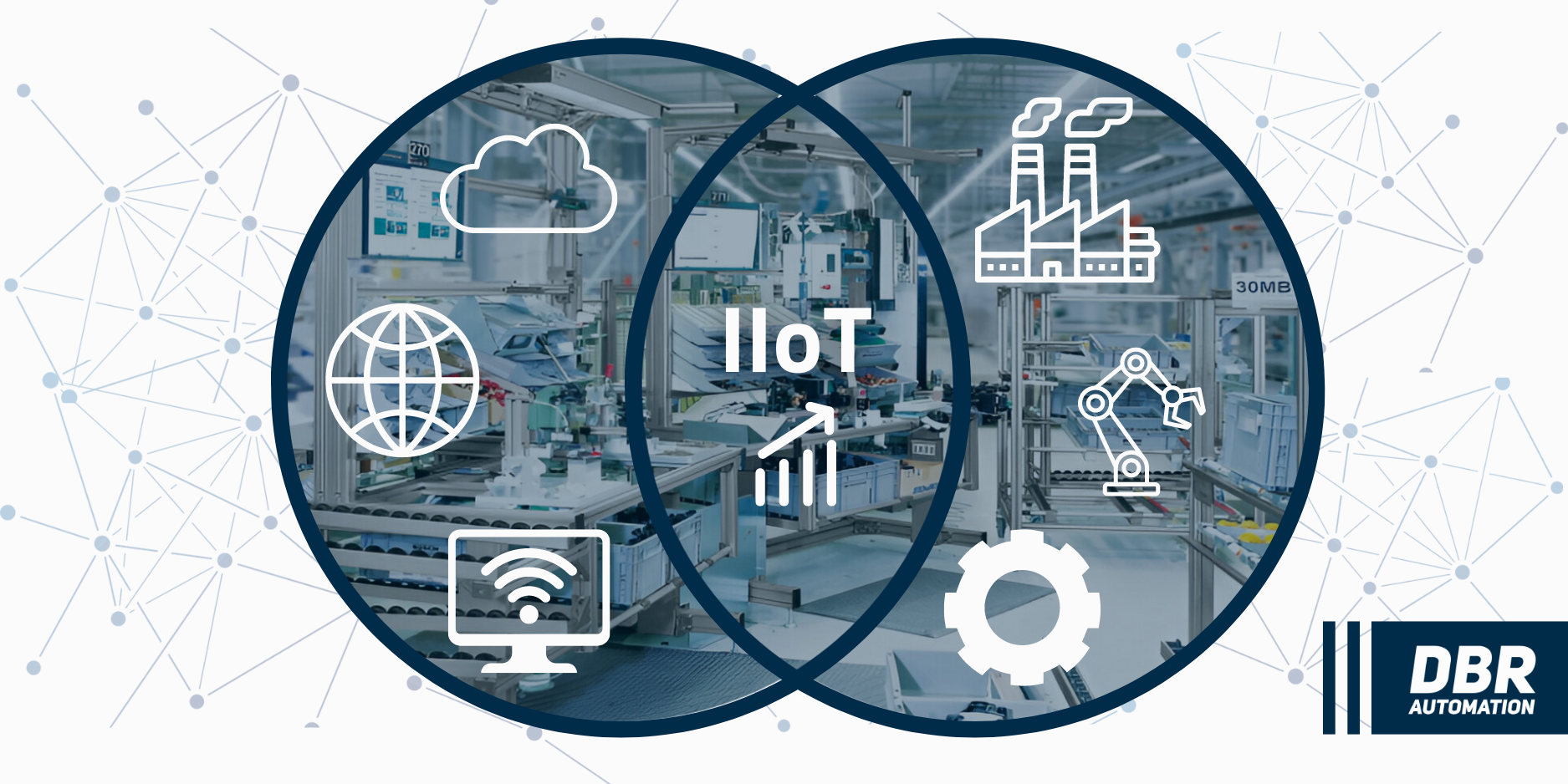Industry 4.0 has become the Factory of the Future with the application of "Internet of Things" in industrial machinery. IIoT turns the entire line of production processes into an agile and flexible startup, easy to monitor and maintain. But what is the difference between IoT and IIoT?
How it works?
IoT literally means "Internet of Things", which consists of the grouping and interconnection of devices and objects through a public network (such as the Internet), or private connection, where they are visible to each other, allowing their interconnection and interaction. But what can IoT be applied to? To any element which we can introduce software, even daily objects such as televisions, refrigerators or automobiles. In short, anything imaginable can be connected through the Internet to interact, without human intervention, from machine to machine, known as M2M (Machine to Machine) interaction.

Industrial Internet of Things, for its acronym IIoT, has the same principle as IoT applicable to the industrial sector. In other words, the objects that interact with each other through public or private networks are machines, devices or sensors used in industrial applications. IIoT networks support M2M communication and regular data transmission between the central system and all integrated devices. IIoT technology is a fundamental component of Industry 4.0. For example, assembly and linear motion technology can be easily connected with drive and control solutions without interfaces being a problem.
The current trend is AIoT (Artificial Intelligence of Things), which unites Artificial Intelligence and the Internet of Things, combining the interconnectivity of devices to the Internet for data collection, with the provision of machine learning, reasoning and planning typical of Artificial Intelligence.
Industrial Internet of Things, for its acronym IIoT, has the same principle as IoT applicable to the industrial sector. In other words, the objects that interact with each other through public or private networks are machines, devices or sensors used in industrial applications. IIoT networks support M2M communication and regular data transmission between the central system and all integrated devices. IIoT technology is a fundamental component of Industry 4.0. For example, assembly and linear motion technology can be easily connected with drive and control solutions without interfaces being a problem.
The current trend is AIoT (Artificial Intelligence of Things), which unites Artificial Intelligence and the Internet of Things, combining the interconnectivity of devices to the Internet for data collection, with the provision of machine learning, reasoning and planning typical of Artificial Intelligence.


CtrlX AUTOMATION drives Industry 4.0 with IoT
In Industry 4.0 everything will be connected and aimed at intelligent automation, which means that control systems and IT (Information Technology) are merged through IoT. The ctrlX AUTOMATION system from Bosch Rexroth exploits the potential of digitalization and networking in connected applications through intelligent components, such as electrical controls, drives, motors... as well as software solutions and application technologies. To achieve an optimal marriage of these technologies, modern automation solutions require open standards, intuitive configuration, maximum flexibility and adaptability to individual requirements. In addition, if you have the right IoT hardware, remote software updates are possible, which means that their full potential can be exploited in the future.
CtrlX AUTOMATION drives Industry 4.0 with IoT
In Industry 4.0 everything will be connected and aimed at intelligent automation, which means that control systems and IT (Information Technology) are merged through IoT. The ctrlX AUTOMATION system from Bosch Rexroth exploits the potential of digitalization and networking in connected applications through intelligent components, such as electrical controls, drives, motors... as well as software solutions and application technologies. To achieve an optimal marriage of these technologies, modern automation solutions require open standards, intuitive configuration, maximum flexibility and adaptability to individual requirements. In addition, if you have the right IoT hardware, remote software updates are possible, which means that their full potential can be exploited in the future.

The CtrlX IoT system uses the OPC UA (OPC Unified Architecture) communication standard, which is fully integrated to send information to control systems, and send the data securely to the cloud for analysis. OPC UA can describe data in a machine-readable way, enabling the use of AI and machine learning applications to develop production strategies. In addition to the OPC UA server, there is an MQTT (Message Queuing Telemetry Transport) editor that is designed to send huge amounts of data in packets, where the control system transmits the data in JSON format, for people can interpret it.
So, what are the benefits?
Integrating IoT in the industrial sector, machinery will be interconnected through intelligent automation systems, which will facilitate the development of optimization strategies in production autonomously, as well as the continuous monitoring and control of equipment. So you can optimize the efficiency of your line of production, optimize decision making, ensure product quality and strengthen competitiveness.
As a user, you can assemble your own system as an overall solution with hardware and software or you can purchase just the individual components you need to make the step into the Factory of the Future. The installation is fast, simple to handle and you can easily optimize your entire production. What are you waiting for? Join Industry 4.0 with DBR Automation.


